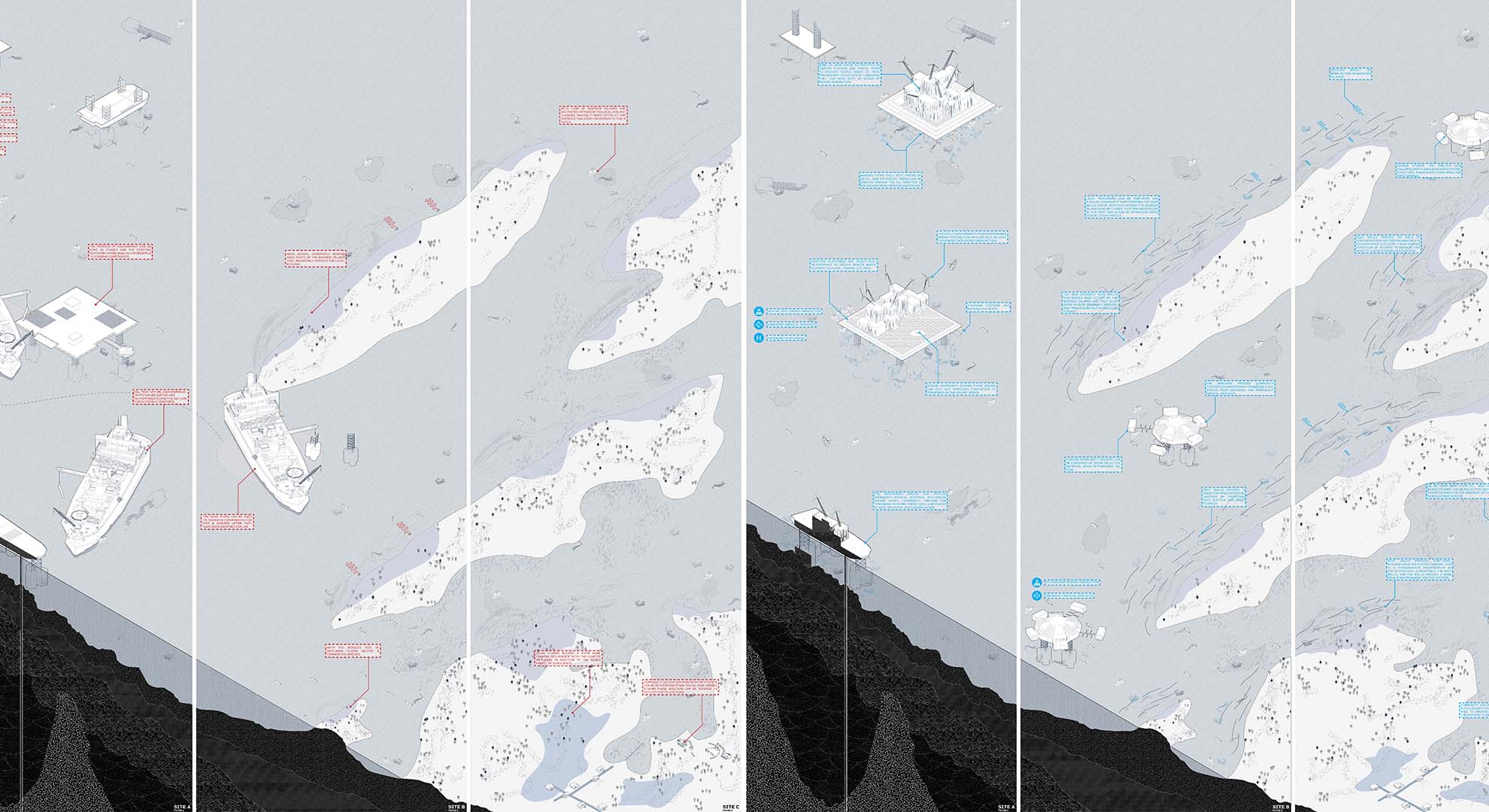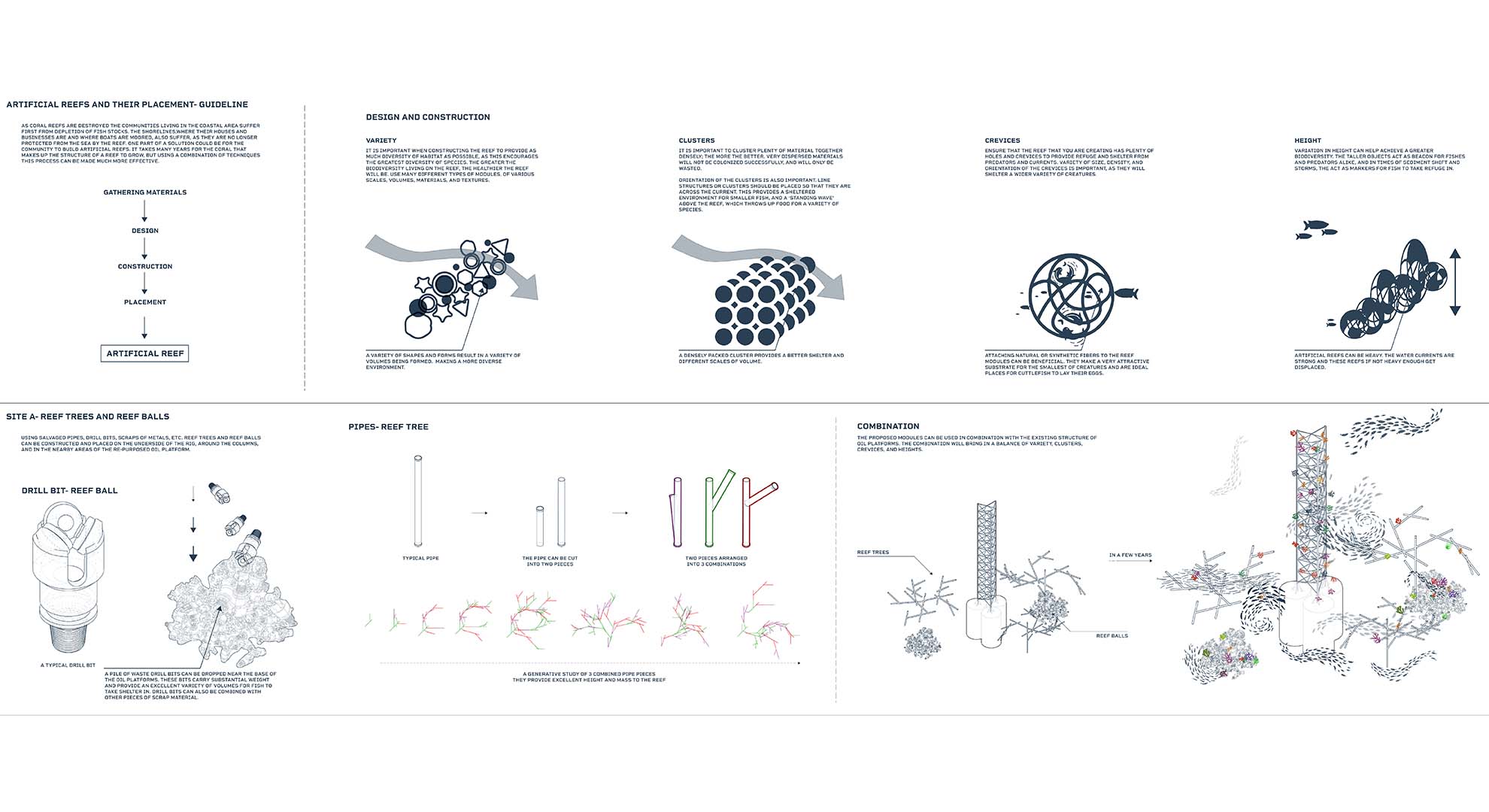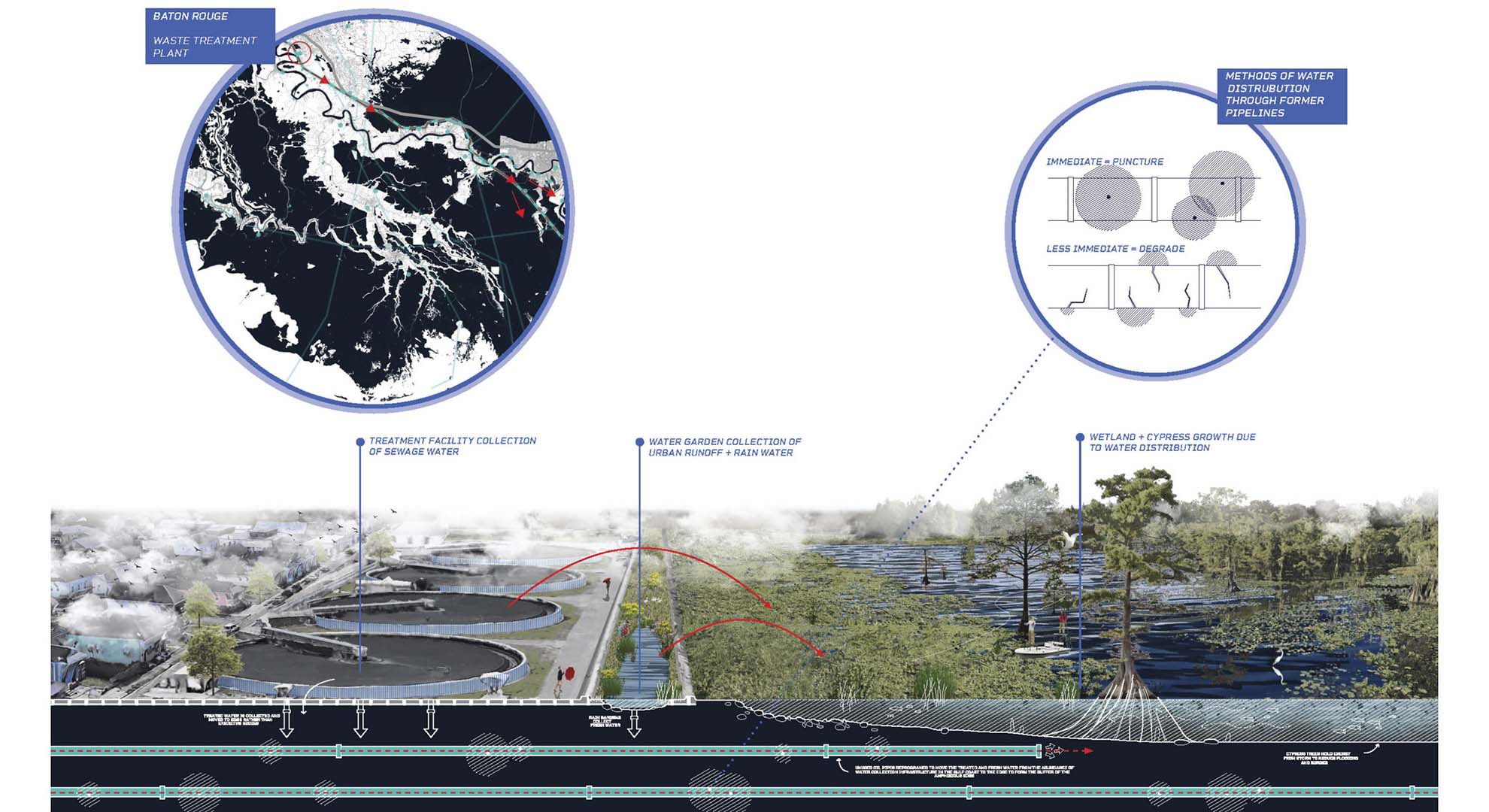Cohabitation Between Human and Aquatic Ecosystems
Innovative coastal restoration projects that reuse oil and gas infrastructure
In the face of mounting challenges posed by rising sea levels and increasingly frequent extreme weather events, coastal areas worldwide are evolving their approach to coastal protection and restoration projects. Marking a departure from an era in which large-scale, hard infrastructural solutions were more readily embraced, the paradigm is shifting towards a desire for infrastructure that embraces civic stewardship and makes space for both humans and nonhumans. This shift has been underscored by recent critical evaluations of projects such as the NY & NJ Harbor Tributaries Focus Area Feasibility Study (HATS).
However, projects like Seattle's Central Sea Wall and Living Breakwaters are leading the way in the United States by emphasizing the imperative to incorporate spaces that accommodate both human and aquatic species within hard infrastructural solutions. As designers contemplate the future of coastal regions, these pioneering coastal and restoration projects, which prioritize structured habitat creation, sensitive siting, and utilizing regenerative materials, yield valuable insights with broader implications for coastal infrastructure development.

Cultivating Transitions, putting forth diverse strategies to use decommissioned oil rigs. Project and images: Karan Sharma (Instructor: Liz Camuti)
Within the Gulf of Mexico region, spanning roughly from Texas to Florida, the abundance of legacy oil and gas infrastructure presents a unique set of challenges and opportunities to coastal landscapes. The Gulf Climate Futures research project at the Tulane University School of Architecture seeks to explore how the lessons gleaned from innovative coastal projects can be effectively applied to the repurposing of these oil and gas legacy infrastructures. Through examining these projects, we have started to uncover transferable principles and strategies that can inform the repurposing of oil and gas legacy infrastructure, ushering in a new era of resilience and cohabitation between human and nonhuman aquatic ecosystems.
Our research is grounded in the hypothesis that to regenerate this landscape and promote collective flourishing, we need to reunite human activities with ecological processes. Not through the production of new “stuff”: materials, infrastructures, etc., that increase our collective carbon footprint and thus contribute to sea level rise, but through rethinking the mechanisms and associated byproducts that have led to this destruction. This is an inherently optimistic way of viewing the future, one that implicates humans in ecosystem degradation while acknowledging the potential value of our material artifacts to species beyond ourselves.
The following projects, generated in the first pilot year of this project, exemplify how this approach to futuring—grounded in lessons from innovative existing and proposed coastal infrastructure—begins to generate potential approaches to the vast amount of aging oil and gas infrastructure along the Gulf Coast.

Cultivating Transitions, testing for the feasibility of repurposing oil rig infrastructure to generate aquatic habitats. Project and images: Karan Sharma (Instructor: Liz Camuti)
Selective repurposing of rig infrastructure to support Gulf Coast fishing cultures
Harnessing oil and gas resources is currently made possible by massive offshore rigs throughout the Gulf of Mexico. When they reach end-of-life, these installations are typically decommissioned, an expensive process requiring the removal and disposal of 64,000 tons of material in some cases. In his project Cultivating Transitions, Karan Sharma, presumes that as climate change progresses and people recognize the urgent need to decarbonize, the pace at which these infrastructures reach end-of-life will hasten. This will necessitate new ways to use the vast amount of materials offshore in a way that can center on the cohabitation of people and aquatic species.
Drawing lessons from coastal protection and restoration projects that include structured aquatic habitat, as well as evolving research on the potential for using decommissioned rigs as artificial reefs, this project puts forward a myriad of new material configurations that reutilize the components of this rig infrastructure to support oysters, crabs, shrimp, and fish species, provide spaces for fisherman to congregate, and even act as offshore hurricane shelters. While the project is speculative, this orientation toward infrastructure offers possible ways forward for the 7,500 offshore oil platforms around the globe.

Pondlines proposes a system for utilizing abandoned oil pipelines to transport water to the coast to support wetland building. Project and images: Leah Bohatch (Instructor: Liz Camuti)
Retrofitting legacy oil infrastructures for productive water movement
A second project, Pondlines by Leah Bohatch, speculates about the potential for reusing onshore oil and gas pipelines, more than half of which are at the end of their lifespans, to cleanse and transport water. She puts forward a system by which former oil pipelines, designed to carry fluids, begin to replace aging water infrastructure throughout the region while also dispersing freshwater to the coast to slow saltwater intrusion and ecosystem change. Utilizing the lessons and goals from projects proposed in the Louisiana Coastal Master Plan, Pondlines questions the potential to reuse existing materials and processes—many of which initially contributed to coastal land loss—to meet these goals.
As we move into the second pilot year of this research and associated design research studio, we aim to continue generating ideas for coupling coastal restoration and protection with the vast, material resources already available within the regional landscape. Ten years ago, coastal infrastructure that made space for aquatic species was a novel concept. As we think about the future of the region’s aging infrastructure beyond just the coastal, these projects continue to illustrate how next-generation infrastructure can evolve to support collective flourishing.
Main image: Cohabitation map of settlements throughout the Gulf Coast region in relation to the natural environment. Image © Liz Camuti
